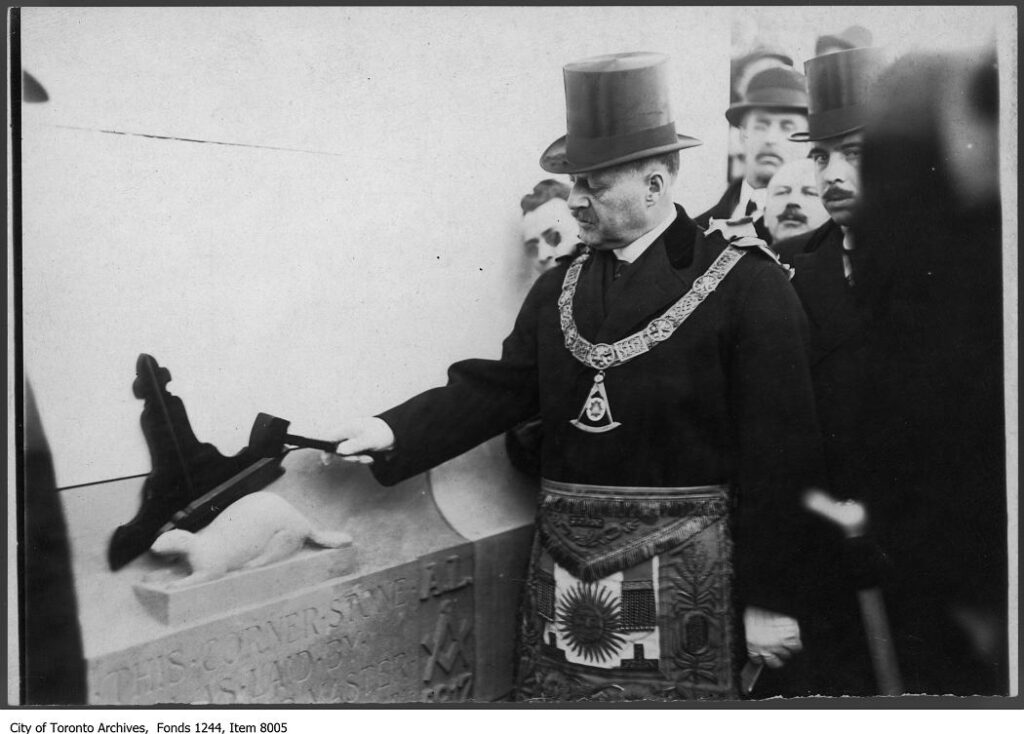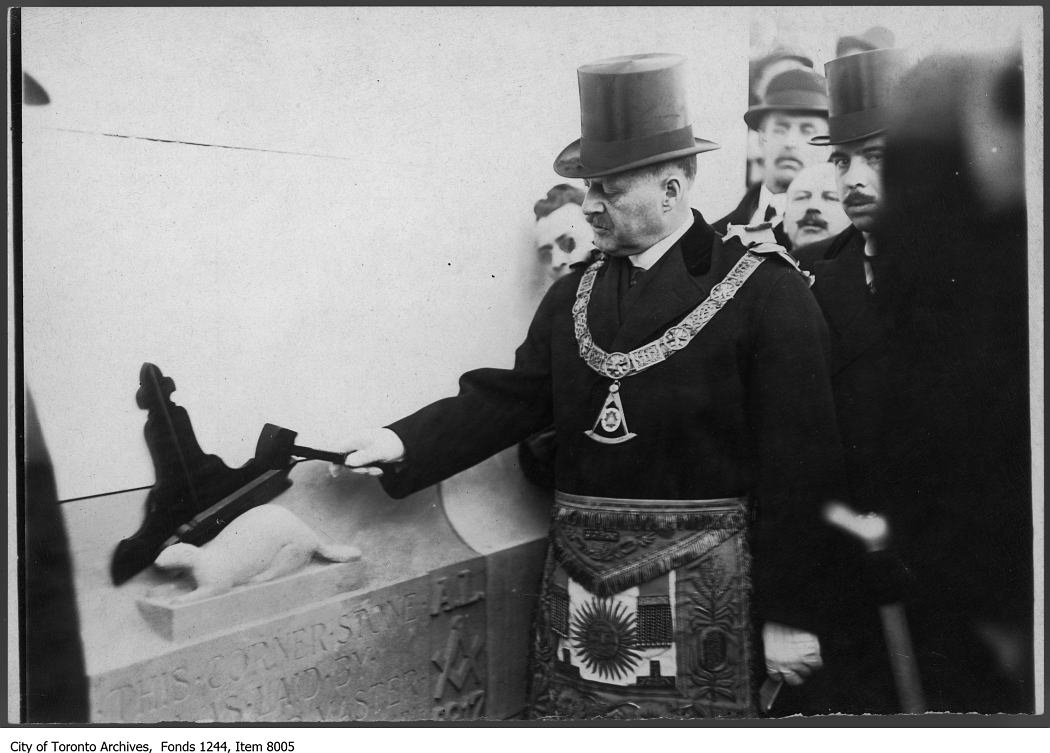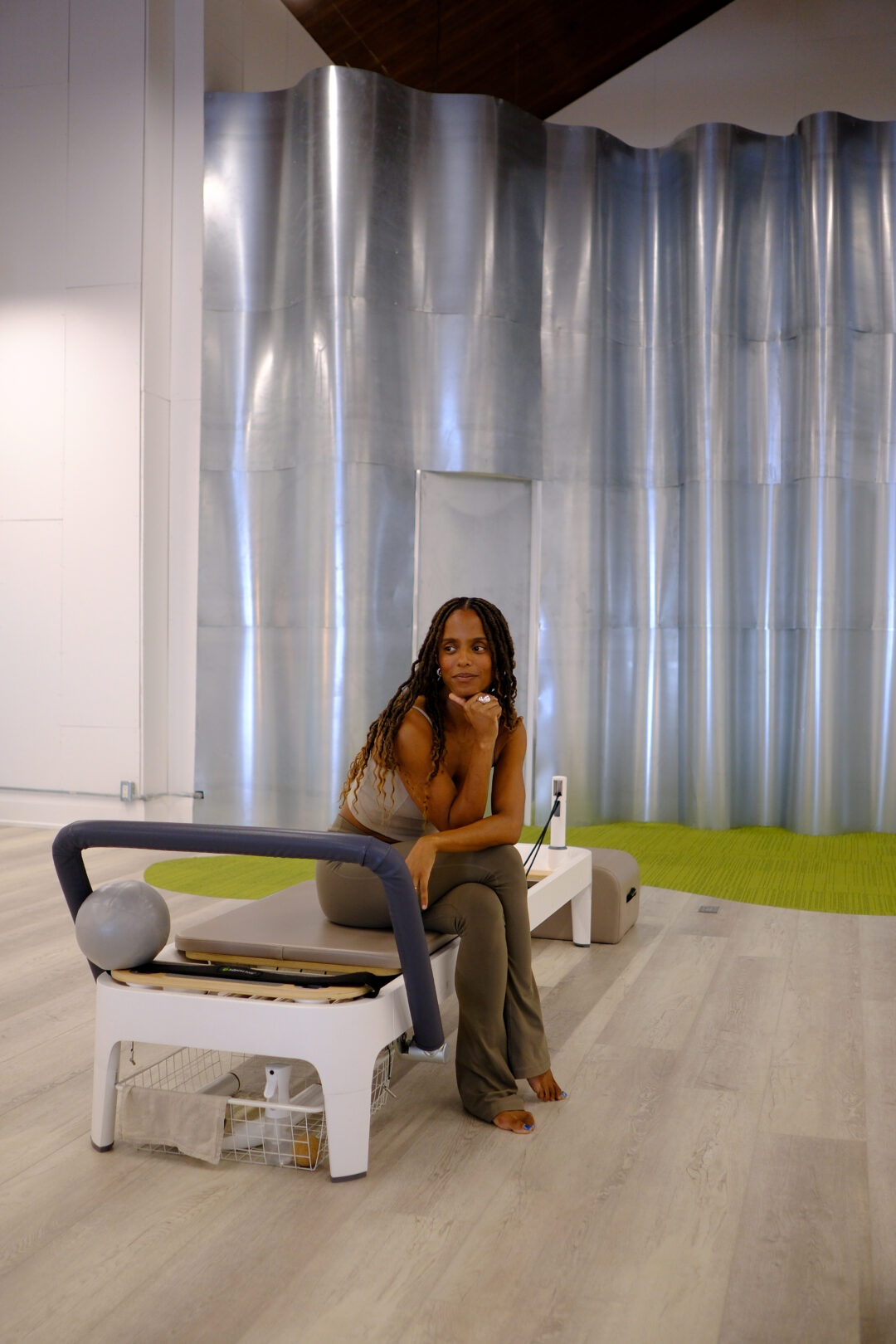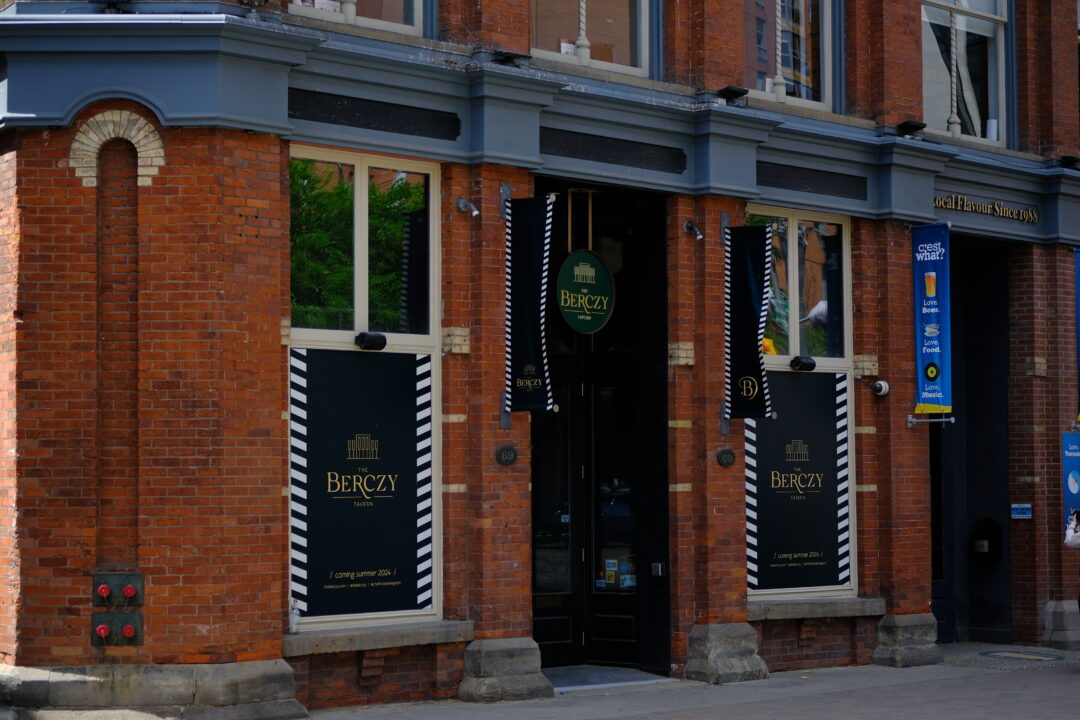Bruce Bell, History Columnist –
Until half a century ago, it’s often been said about Toronto, in order to move up the ladder in government, business or high society it was essential to be a member of at least two of these organizations: the Orange Lodge, the Anglican Church and the Masons (being male went without saying).
Photos of city councils a few generations ago show city fathers resplendent with Orange and Mason regalia. Canada’s first prime minister, Sir John A. Macdonald, and 14 Ontario premiers were Masons, as were other celebrated Canadians such as John Eaton, Tim Horton, John Molson, Gordon Sinclair, Harold Ballard and musical great Oscar Peterson
While the once dominant grip held by the Anglican Church and Orange Lodge has since diminished, the mysterious world of Masons and their alleged power still draws criticism as well as esteem.
Before the internet, the ancient Brotherhood of Masons, in which members freely associate as equals for a mutually beneficial purpose, had secrets known only to those who became one. This ancient order is reputed to descend from the builders of Solomon’s Temple and to be associated with the legendary Templar Knights.
To become a Mason requires a firm belief in a supreme being and being nominated by two members. While many non-mainstream Masonic lodges welcome two sexes, women and Masonry seems to be a complex issue.
“What is appealing for most that have joined Masonry is how unique a society it is, a society of inclusion, not exclusion. This has been demonstrated for generations all around the world in that Masonry includes all faiths and ethnicities,” says Quintin Johnstone, a third-generation Mason since 1986.
Approximately six million people around the world are Masons; in Ontario 53,000 Masons are in 571 lodges.
The Masons have been in Toronto since the late 1700s, reputedly holding their first meeting on a dock at the bottom of Church Street just below Front Street. Masons of early York had as their Grand Master the Duke of Kent, fourth son of George III, the sovereign when York was founded.
The duke lived in York as the commander-in-chief of British forces in North America, and is best known as the father of Queen Victoria.
The first permanent Masonic Lodge stood at 35 Church Street just north of Front, then the site of Russell’s Hotel (c. 1830, now the site of the Hot House Cafe), where the upper floor was especially built for the St. Andrew’s Lodge of Freemasons.
By 1857 with the Town of York surpassed by the city of Toronto, the Masons built a temple at 20 Toronto Street for its growing membership. Originally built as a concert hall, this impressive temple was owned by a Jewish man, Samuel Nordheimer. After falling in love with his Christian wife, Nordheimer converted to Anglicanism and became involved with the growing and highly enigmatic Masonic movement that was sweeping through North America.
Then he decided to convert the upper floors of his once opulent music hall into homes for the nine Masonic Lodges then in Toronto.
By 1901 those Lodges began to move into more spacious premises like the massive Temple Building (1896-1970) at Bay and Richmond Streets and the still standing Masonic Temple on Yonge Street at Davenport (1918). The Toronto Street Temple was demolished in 1964.

Masonic master lays cornerstone for Masonic Temple, Yonge Street and Davenport Road. Image courtesy Toronto Archives
All the temples were adorned with Masonic iconography. But not just Masonic Temples had noticeable secret symbols inscribed throughout them; almost every public building constructed in Toronto until the 1950s had some sort of Masonic adornment. These went from the commonplace triangle shapes above doors and windows to the two colossal stone Corinthian columns that flank the entryway inside Union Station that represent the Temple of Solomon.
Other imposing buildings laden with Masonic symbols include Old City Hall and the Queen’s Park Legislative Building, both having pyramid-shaped roofs representing the all-seeing eye and adorned with a compass and square (a basic Masonic tenet to be straightforward and honest) and stars made from intersecting triangles.
Perhaps the most colossal Masonic symbol in Toronto today is the Royal York Hotel. While it might be an urban legend, original plans for the hotel in the 1920s had a flat roof, but the owners, the Canadian Pacific Railway and its board members (all Masons) decided to add a peak, making the roof the same height as the Great Pyramid at Giza, pyramids being a major Masonic symbol.
A small but telling symbol is embedded into the century-old Jarvis family’s stained-glass window in St. James Cathedral at King and Church Streets. This stunning window depicting the Pentecost, by Edward Sperry of Tiffany’s, has a modest Masonic square and compass set into the glass. Thus it ties together the Masons, the Anglican Church and the Orange Lodge.




